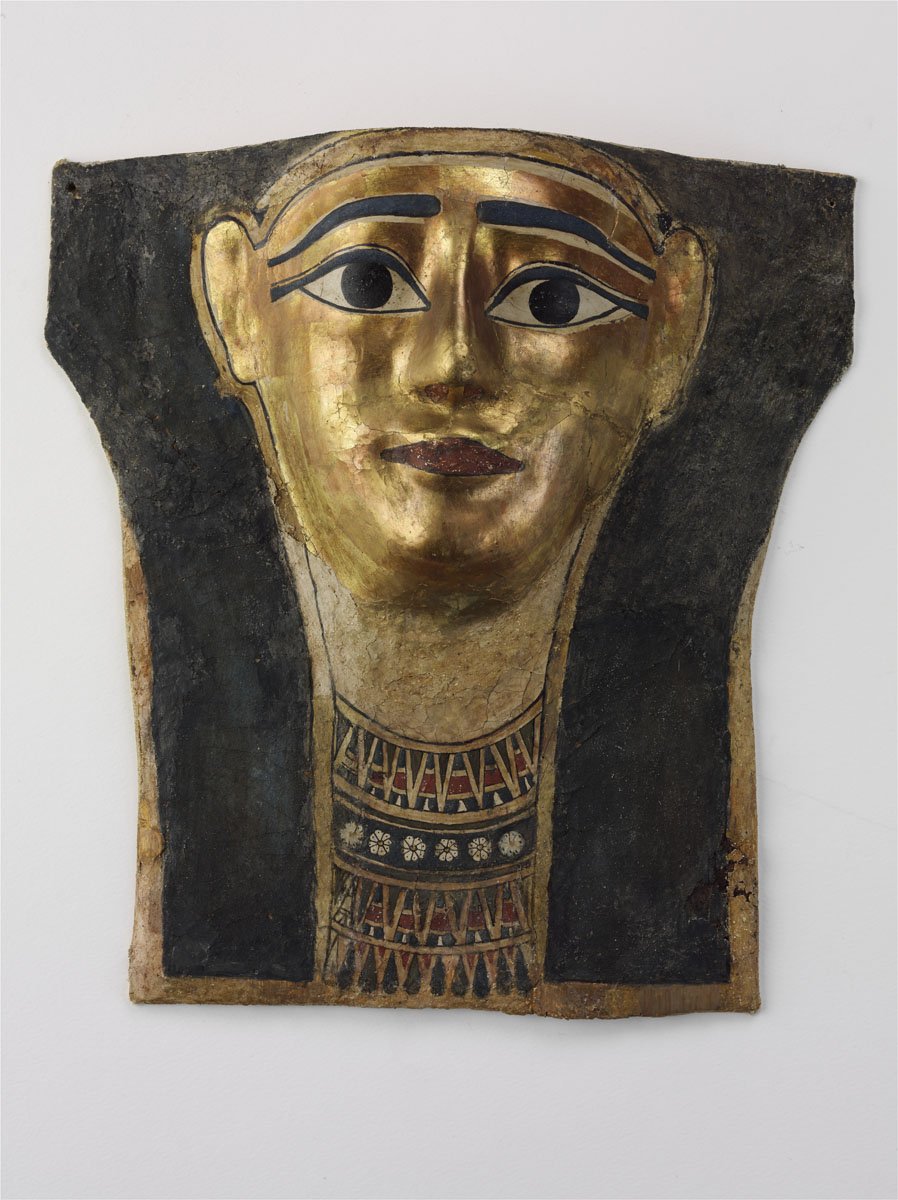
Parts of a set of cartonnage mummy trappings
Egyptian Art
| Place of production | Akhmim, Egypt |
|---|---|
| Date | ca. 750 B.C. |
| Object type | tomb equipment |
| Medium, technique | Wood, covered with gessoed linen |
| Dimensions | 179 x 48 cm |
| Inventory number | 51.1995.1-2 |
| Collection | Egyptian Art |
| On view | Museum of Fine Arts, Basement Floor, Ancient Egypt, Funerary beliefs |
A gessoed linen base was applied to the surface of the wooden anthropoid coffin before it was decorated. This procedure was typically used on coffins at the end of the Twenty-second Dynasty (c. 750 BC). In the previous period inner pieces of coffin ensembles manufactured for members of the elites of society were made of cartonnage (linen layers glued together and covered with plaster). Cartonnage cases entirely and tightly enveloped the mummy lying inside them and were closed at the rear. On the other hand, some iconographic inventions were also introduced which were designed to emphasize the statue-like character of the anthropoid coffin. Feet were regularly placed on low pedestals, and the bottoms of the cases (i.e. the backs of the mummy) were applied with painted or sculptured back pillars. This coffin is decorated only on the lid and the sides. Below the striped wig and the wesekh-collar the ram-headed, bird-shaped deity, the nocturnal form of the sun god, stretches out his wings over the deceased in order to protect him or her. The tail of the bird continues in a column of polychrome inscription consisting of a short offering formula which divides the decoration field of the lid under the waist into two symmetrical halves. On both lateral zones three scene panels succeed each other with the representations of protective funerary deities. The name of the owner can be read in the central inscription: Di-hor-iaut, i.e. “May Horus give great age/long life”. With almost the same qualities, elaboration and decoration, another coffin of this type is kept in a French collection which is supposed to originate from Akhmim and this fact makes it certain that the otherwise unknown provenance of the Budapest piece must have been there, too.
This record is subject to revision due to ongoing research.